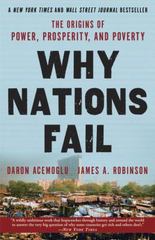Question
I. A Simple Malthusian Model. (54 points) Let us consider a Malthusian economy in which the aggregate level of output at time t can be
I. A Simple Malthusian Model. (54 points)
Let us consider a Malthusian economy in which the aggregate level of output at time t can be
described by the following aggregate Cobb-Douglas production function:
! = "#!
where a(0,1) , > 0 denotes the productivity parameter, > 0 stands for a fixed aggregate
stock of land used in agriculture and ! represents the aggregate population of workers which is
assumed to be a constant fraction g(0,1) of the aggregate population !:
! = g!
The change in the population size from time t to t+1 is given by:
!%" ! = ! !
At every time t , let us consider that the aggregate number of births: ! and the aggregate number of
deaths: ! can be written as:
! = !
&!
! = .1 !
&1!
where , > 0, (0,1) are parameters and ! denotes the output per capita at time t defined as:
!
!
!
Let ! stand for the land per capita at time t defined as:
!
!
2
a. Write down the per capita production function at time t and explain how an increase in the
fraction of the population employed g affects the output per capita at that period. (10 points)
b. Using your answer to question a, display in a two-dimensional diagram how the population size
! affects the output per capita ! given a(0,1) , , > 0 and g(0,1) . (5 points)
c. Identify an equation showing how the output per capita at time t affects the growth rate of the
aggregate population from time t to t+1 . (5 points)
d. Using your answer to question c, display in a two-dimensional diagram how the output per
capita ! affects the aggregate population growth rate from time t to t+1 given , > 0,
(0,1) . (5 points)
e. Derive the steady-state population size: !%" = ! = '', the steady-state land per capita:
!%" = ! = '' and the steady-state income per capita: !%" = ! = ''. (15 points)
f. Starting at the steady-state solution, explain the short-run and the long-run effects resulting
from a one-time permanent reduction in g . (14 points)
II. The Canadian Economy. (46 points)
Using the Penn World Table PWT version 10.0: (https://www.rug.nl/ggdc/productivity/pwt/),
download the following data from 1950 to 2019 for Canada: "Population (in millions)"
denoted by pop and the "Number of persons engaged (in millions)" denoted by emp.
a. Derive the fraction of the population engaged (represented by the parameter g in the previous
problem) in percent for the years 1950, 2010 and in 2019. Display the formula that you used.
(10 points)
b. Derive in percent the average annual growth rates of the population, the average annual
growth rates of the number of person engaged and the average annual growth rate for the
fraction of the population employed from 1950 to 2019 and during the last decade: 2010-
2019. Display the formula that you used. (20 points)
c. Compared to the average annual growth rates from 1950 to 2019, how would you describe
the last decade: 2010-2019? (6 points)
d. If the average annual growth rates during the last decade remain the same in the future, then
how many years would it take for the fraction engaged to reach 55%? (10 points
Step by Step Solution
There are 3 Steps involved in it
Step: 1

Get Instant Access to Expert-Tailored Solutions
See step-by-step solutions with expert insights and AI powered tools for academic success
Step: 2

Step: 3

Ace Your Homework with AI
Get the answers you need in no time with our AI-driven, step-by-step assistance
Get Started


